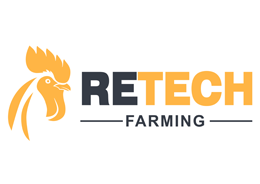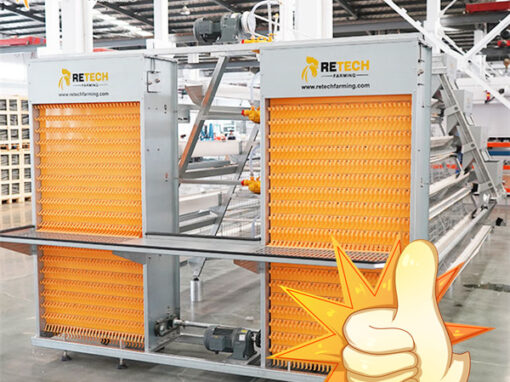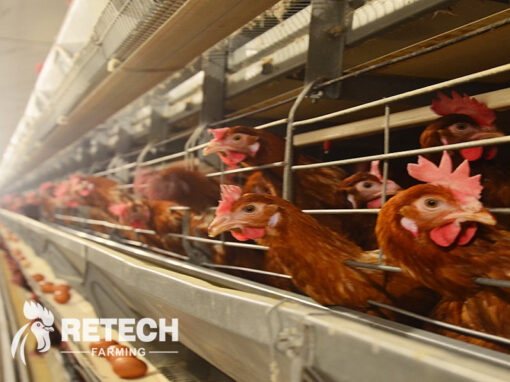The living habits of laying hens in the four seasons are very different. Understand the physiological changes of laying hens, and better take corresponding feeding measures to let laying hens lay high-quality eggs!
The physiological changes of laying hens can be seen from four aspects: feeding, drinking, laying eggs and moulting:
1. Changes in feeding habits
1). Summer feed intake
When the temperature is high in summer, the energy demand of laying hens decreases, and thus the feed intake decreases. When the temperature exceeds 30 ℃, the feed intake is reduced by 10% to 15%; when it is extremely hot, it can be reduced by more than 30%. As a result of reduced feed intake, protein and calcium intake is also reduced, resulting in lower egg production.
In summer, the diet can be adjusted appropriately at this time. It can be adjusted according to the principle of “one minus four increase”. One reduction: that is, reducing energy feed. Four increase: increase protein, calcium, oil and feed.

The importance of clean tank in chickens coop!
2). Winter feed intake
In the cold winter, laying hens need to consume more nutrients to keep out the cold and increase their feed intake. When the house temperature is lower than 21 ℃, the chicken feed intake will increase by 1% for every 1 ℃ drop; at this time, the adjustment principle of the diet is “only increase without decrease”.
(1) Increase the amount of feed, preferably by 10%, but not too much, so as to avoid excessive fat.
(2) Increase the energy level in the feed.
(3) Increase the content of vitamin A and vitamin D3 in the diet.
2. Changes in drinking habits
1). The changes in drinking water in summer are prominent
The prominent season of chicken drinking water changes during the year is summer, when thirst increases and drinking water increases. Under lukewarm climate conditions, the water consumption of laying hens is 2 times of the feed amount; in hot conditions, the water consumption is 4 to 5 times of the feed amount. Corresponding measures: As water shortage can affect egg production, for example, water shortage for 24 hours can reduce egg production by 30%, and it is difficult to restore the original egg production rate. Therefore, the laying hens must be provided with sufficient drinking water, but there must be limits, and the chickens should not be allowed to drink binge, because too much water can cause watery diarrhea. The appropriate amount of water to drink in summer is 4 to 5 times the weight of the feed.
3. The changing law of egg-laying habits

battery chicken cage
1). Egg production process management
It grows rapidly from the start of production to the peak of egg production, maintains for a period of time at the peak, and then slowly declines.
Corresponding management measures: adjust the diet of laying hens in time according to the rise and fall of egg production rate, and increase or decrease various nutritional components of the diet. Before the flock reaches the peak of egg production and during the peak period of egg production, the proportion of protein and mineral feed should be appropriately increased to meet the needs of egg production and maintenance of health. When the egg production rate is low, on the basis of ensuring the health of laying hens, the proportion of protein and mineral feed should be appropriately reduced to reduce feed costs.
4. The changing law of moulting habit
1). Moulting
Under natural light conditions, adult chickens will naturally moult at a temperature of about 20 degrees, which generally takes 3 to 4 months. Corresponding management measures:
(1) During the moulting period, the metabolic function of the chicken body is weakened, the disease resistance is reduced, and egg production is stopped. In order to shorten the moulting time, restore the chicken’s physical strength, promote feather growth, and resume egg production as soon as possible, it should be fed with high-quality feed that is easy to digest, with good protein quality and sufficient quantity, especially methionine and B vitamins that promote feather growth. Avoid increasing the light time in order to end the moult as soon as possible.
(2) According to the different performances of moulting, the superior and the inferior are selected. High-yielding chickens moult late, start late autumn and early winter, and resume egg production after 1 to 2 months. During moulting, the main wing feathers are shed several times at the same time. The moulting of low-yielding chickens starts early in the late summer and early autumn, and the moulting is completed after 3 to 4 months. During moulting, the main wing feathers are replaced one by one.
(3) According to the special needs of production, manual forced moulting is carried out. Generally, it is carried out during the natural moulting season in autumn, and the moulting time can be shortened by more than half according to the situation; after the egg production is resumed, the production starts neatly, which can increase the egg production rate by 9%, increase the egg weight, the eggshell quality is good, and the egg utilization rate is high. At present, there are three commonly used artificial forced moulting methods, namely starvation method, high zinc method and hormone method, and one can be selected according to the local conditions at the time of production.


